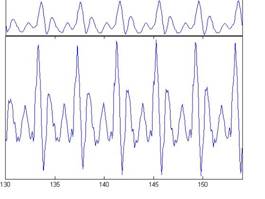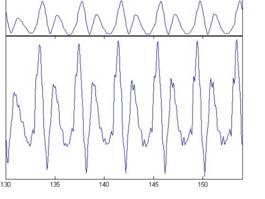AIM2006ModulesPCP
From CNBH Acoustic Scale Wiki
The PCP module applies a filter to the input signal to simulate the transfer function from the sound field to the oval window of the cochlea. The purpose is to compensate for the frequency-dependent transmission characteristics of the outer ear (pinna and ear canal), the tympanic membrane, and the middle ear (ossicular bones). At absolute threshold, the transducers in the cochlea are assumed to be equally sensitive to audible sounds, so the pre-processing filters apply a transfer function similar to the shape of hearing threshold under various assumptions.
The default version of PCP is gm2002: It applies the loudness contour described by Glasberg and Moore (2002).
There are actually four different PCP filters available for different applications:
- maf: Minimum Audible Field.
- map: Minimum Audible Pressure.
- elc: Equal-Loudness Contour compensation
- gm2002: The loudness contour described by Glasberg and Moore (2002).
- none: No pre-processing.
The threshold curves are all implemented with FIR techniques. Compensation is included to remove the time delay associated with the FIR filtering, so that the user is unaware of the shifts.
Background
Elc, map and maf are defined in Glasberg and Moore (1990). maf is appropriate for signals presented in free field; map is appropriate for systems that produce a flat frequency response at the eardrum. Options elc and gm2002 include the factors associated with the extra internal noise at low and high frequencies, in addition to the transfer function from sound field to oval window. Specifically, elc uses a correction based on equal-loudness contours at high levels (ISO 226, 1987) (Glasberg and Moore, (1990)). Gm2002 is essentially the same as elc but it is based on the more recent data of Glasberg and Moore (2002).
Figure 4 shows the result of applying the gm2002 transfer function to the four vowel sounds in Figure 3. The input waves are presented in the upper panel of each subfigure; the filtered waves are presented in the middle panel of each subfigure in the same format as in Figure 3. Speech sounds are, by their nature, compatible with the range of human hearing and so the effect of the transfer function is very limited; it is discernable in slight changes in the microstructure of the resonances. The input and filtered waves are aligned in time; that is, compensation is included to remove the time delay associated with the FIR filtering.



